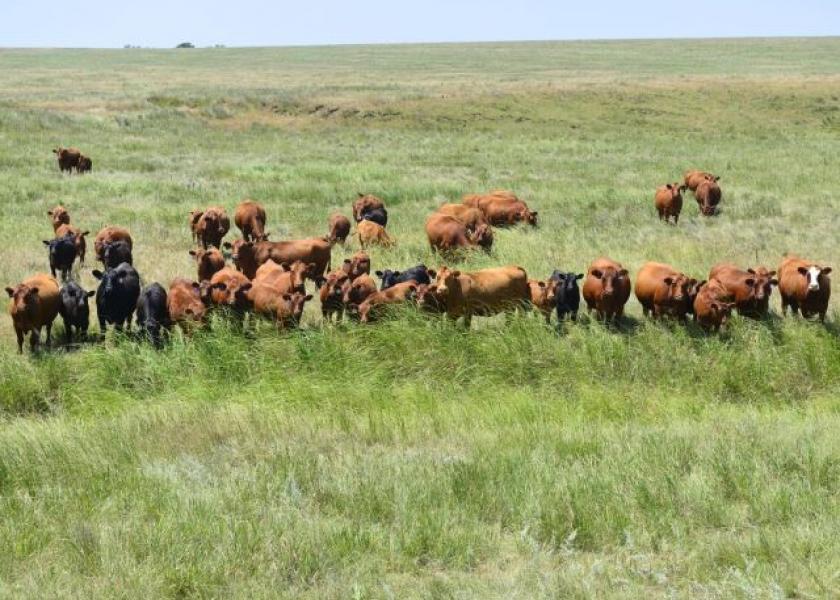Cow Efficiency: Crossbreeding to Build a Better Cow

Note: This story is the third part of a three part series on cow efficiency. Part one on economic efficiency and part two on genetics are currently online.
Currently, the U.S. cowherd is in rebuilding mode. While more heifers are being held back cattlemen need to consider how to make their herd more profitable. The best way to do that might be improving the efficiency of your cows.
During the Range Beef Cow Symposium held in Loveland, Colo. a panel of ranchers described how they have improved the efficiency of their cowherds and gave advice on what can be done by other producers.
As a seedstock producer, Lee Leachman, partner in Leachman Cattle of Colorado, has been aiming to improve the efficiency of his cattle to pass those genetics onto commercial cattleman.
Leachman thinks that efficiency measures like feed to gain, residual feed intake (RFI), feed intake and residual average daily gain (RADG) can help determine where cattle stand. However, producers can get locked into one measurement and push themselves towards single trait selection, limiting the overall improvement of their genetics.
“What I want to think about is how efficiency affects profit,” Leachman says. He defines that as “profit per acre.”
The mentality should shift from being locked in as certain sized operation towards how much dry matter is available per acre.
“We need to get away from thinking about it as a certain number of cows,” Leachman adds. “We need to start asking ‘What is the most efficient way to harvest that forage and what do I want that cow to look like?’”
Chasing trends like excess milk and growth have negatively impacted the profitability per acre for cattle producers on range pasture. Another difficulty in solving the feed efficiency equation has been the continued trend of increasing carcass weights.
As carcass weights go up it drags that minimum cow size up with it, Leachman says.
Despite the trend cattle producers should be aiming to raise replacement females that can wean a calf that will feedout to a larger size than she is on grass.
“If you’ve got a cow that weighs more than the slaughter weight of your steers, you’ve got a real problem,” Leachman adds.
Slightly smaller cows that are more efficient eaters with calves that can perform should be the ultimate goal.
“The efficiency makes a bigger change, plus it has less antagonism on the carcass weight,” Leachman says of focusing on feed efficient cows.
Heterosis shouldn’t be ignored either. Leachman points to research done by the U. S. Meat Animal Research Center (USMARC) showing a crossbred cow generates 23% more annual income compared to a straightbred female.
“That heterosis effect looms large in the calculus,” Leachman says. “It radically changes your profitability.”
USMARC’s research also showed longevity improved 15% and lifetime production increased 30% for crossbred cattle.
“Every way you look at it crossbreeding increases the efficiency of a cow-calf operation,” Leachman says.
Note: The cow efficiency series will continue with perspective from a Colorado beef producer.
The first story in the series Cow Efficiency: Economic Considerations for Building a Better Cow is available to read. The second part of the series Cow Efficiency: Genetics Role in Building a Better Cow is online, too.







